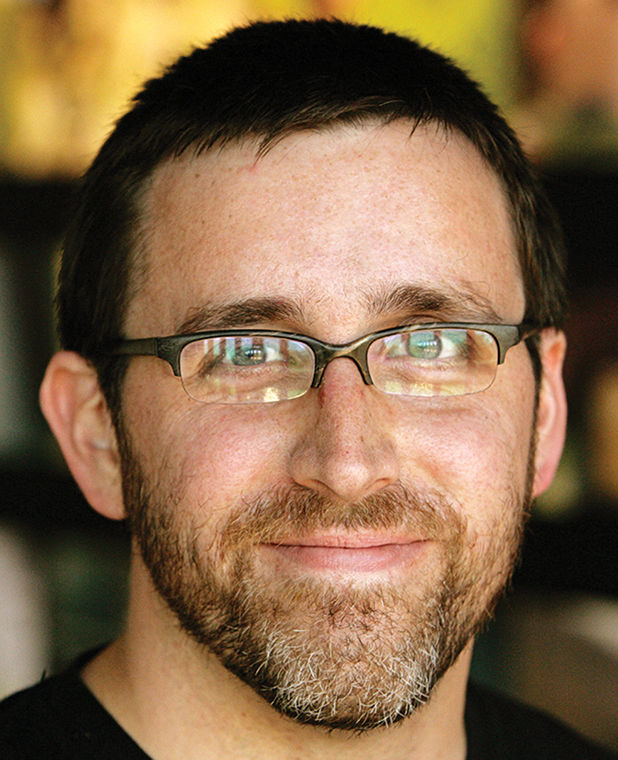Pixar Animator, Alumnus: ‘Don’t settle for no’
Aaron Hartline, a 1995 cinema art and science alumnus, has been animating motion pictures for more than 16 years. He has worked on the movies such as “Up,” “Ice Age,” and “Toy Story 3.”
September 6, 2016
In “Veggie Tales” and “Toy Story 3,” Pixar animator and 1995 cinema art + science alumnus Aaron Hartline helped bring to life stories that appeal to children of all ages.
Although he originally wanted to pursue a career in fine arts, Hartline found animation satisfied his passion for both drawing and film after taking an animation course at Columbia.
While enrolled, he discovered he was going to have a child with his girlfriend. Although his job would have helped support his family, Hartline said he knew it was now or never if he wanted to pursue the arts. He quickly became a Columbia student and took as many animation classes as possible for six months.
Near the end of Hartline’s time at Columbia, he answered a newspaper ad and landed a job at Game Refuge, an independent video game developer. While there, he animated titles such as “Rampage.” He has also completed several other projects such as “Ice Age,” “Up” and 2015’s “Inside Out.” He added that the “Toy Story” movie inspired his desire to work with Pixar.
Hartline spoke with The Chronicle about his early career animating films and video games, never settling and his many Pixar projects.
THE CHRONICLE: Do you think you would have been successful at Game Refuge without Columbia classes?
AARON HARTLINE: I never treated it as [though] the degree was going to get me the job, but it helped. They were doing this fancy, new kind of CG that at the time cost $30,000–$40,000 a computer, and I could not get my hands on that. So, I went back to night school and learned. I think Columbia gave me the tools that I can [use to] actually reach the goals that I wanted.
What about the movie “Toy Story” made you want to work for Pixar?
At the time I grew up as a ‘70’s kid, and I was all about “Star Wars.” I was working so hard toward [Industrial Light and Magic] and doing visual effects. I really [wanted] to work on visual effects and that kind of stuff. But when I saw “Toy Story,” it just opened my eyes. It was like, “Wow, you can act and bring things to the life on the computer.”
Could you describe a typical day at an animation office?
A typical animator day is like [this]: You come in, you go to the cereal bar and get some cereal. You sit around and talk to your fellow animators until you see the director walking through the atrium. Then you hurry up, throw the bowls in the trash, run into the screening room and you show your shot up on the big screen. I have been doing this for almost 20 years, and my heart still sinks when my shot comes up.
Was there ever a time in your animation career when you thought you would have to settle for something other than Pixar?
Pixar was always the end goal. At Blue Sky Studios [the animation studio that produced “Ice Age”], I went from a rigger, which is kind of like rigging up the characters to an animator, to a lead [and then] to a supervisor. That should have been it right? I am happy. I am at the highest part of the department. I could just stay here. Instead I decided [ to move forward].
I went back to being a junior animator at Pixar and working my way up. It is tough when you are making good money, and you are making bigger decisions, and you are in the room to say, “No, I am going to push that all aside and start from the bottom at Pixar.”
At least in my heart I knew that Pixar was making stories that were going to last—that people were going to talk about and remember for a long time.
Why did you feel the need to do so many independent projects such as “Box Meets Circle,” The Daily Post-It and your many short films?
It was all about the goal of [getting into] Pixar. I saw it in 1995 and got [hired] in 2008. I applied every year and got rejected every year. It was never like I decided that I was going to go work at Pixar now. I failed plenty. I never thought it was going to happen, but when I finally got there and got to work on “Toy Story 3,” that was my dream. It was kind of like,“OK, what now?”
I spent my life trying to work, trying to go toward, in my eyes, this unreachable goal. So, I like to make these impossible goals for myself. Right now it’s the “Box Meets Circle” comic. One day, I hope it can be a children book series or maybe on TV as a cartoon.
What would you recommend to aspiring animation students?
Do not settle for “no” or a rejection letter. A lot of my friends wanted to work at Pixar. We started out with that goal. One by one they didn’t make it, and it wasn’t because I was better. It was because I wouldn’t settle for no.
I had no plan B. I was not going out eating every night, having a great time with friends. It was tough. You have got to get used to failure. It is OK as long as you know that you can learn from that failure and move forward.








